The Azure Stream Analytics is way to manage session windows:
Session windows group events that arrive at similar times, filtering
out periods of time where there is no data. Session window function
has three main parameters: timeout, maximum duration, and partitioning
key (optional).
The following diagram illustrates a stream with a series of events and
how they are mapped into session windows of 5 minutes timeout, and
maximum duration of 10 minutes.
A session window begins when the first event occurs. If another event
occurs within the specified timeout from the last ingested event, then
the window extends to include the new event. Otherwise if no events
occur within the timeout, then the window is closed at the timeout.
If events keep occurring within the specified timeout, the session
window will keep extending until maximum duration is reached. Please
note that the maximum duration checking intervals are set to be the
same size as the specified max duration. For example, if the max
duration is 10, then the checks on if the window exceed maximum
duration will happen at t = 0, 10, 20, 30, etc.
Thus mathematically, our session window ends if the following
condition is satisfied:
Stream Analytics session window 5 mins timeout & 10 mins maximum
When a partition key is provided, the events are grouped together by
the key and session window is applied to each group independently.
This is useful for cases where you need different session windows for
different users or devices.
Here is the Syntax:
SESSIONWINDOW(timeunit, timeoutSize, maxDurationSize) [OVER (PARTITION BY partitionKey)]
SESSIONWINDOW(Timeout(timeunit , timeoutSize), MaxDuration(timeunit, maxDurationSize)) [OVER (PARTITION BY partitionKey)]
Explanation:
timeoutsize
A big integer that describes the gap size of the session window. Data
that occur within the gap size are grouped together in the same
window.
maxdurationsize
If the total window size exceeds the specified maxDurationSize at a
checking point, then the window is closed and a new window is opened
at the same point. Currently, the size of the checking interval is
equal to maxDurationSize.
partitionkey
An optional parameter that specifies the key that the session window
operates over. If specified, the window will only group together
events of the same key.
Examples:
JSON:
[
// time: the timestamp when the user clicks on the link
// user_id: the id of the user
// url: the url the user clicked on
{
"time": "2017-01-26T00:00:00.0000000z",
"user_id": 0,
"url": "www.example.com/a.html"
},
{
"time": "2017-01-26T00:00:20.0000000z",
"user_id": 0,
"url": "www.example.com/b.html"
},
{
"time": "2017-01-26T00:00:55.0000000z",
"user_id": 1,
"url": "www.example.com/c.html"
},
// ...
]
To measure how long each user sessions are, you can use the following query:
CREATE TABLE localinput(time DATETIME, user_id BIGINT, url NVARCHAR(MAX))
SELECT
user_id,
MIN(time) AS window_start,
System.Timestamp AS window_end,
DATEDIFF(s, MIN(time), System.Timestamp) AS duration_in_seconds
FROM localinput TIMESTAMP BY time
GROUP BY user_id, SessionWindow(minute, 2, 60) OVER (PARTITION BY user_id)
The preceding query creates a session window with a timeout of 2
minutes, a maximum duration of 60 minutes and partitioning key of
user_id. This means independent session windows will be created for
each user_id. For each window, this query will generate output that
contains the user_id, the start time of the window (window_start), the
end of the window (window_end) and the total duration of the user
session (duration_in_seconds).
It's very simple, just start from the beginning if you're getting stuck.
